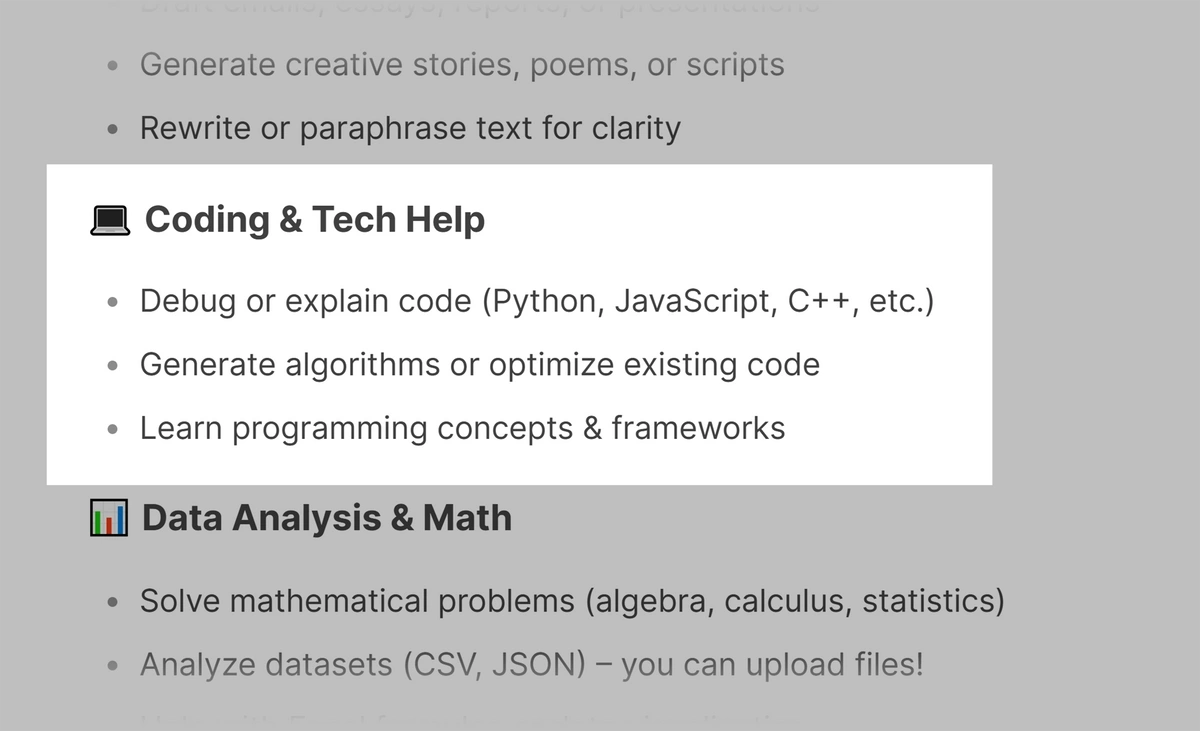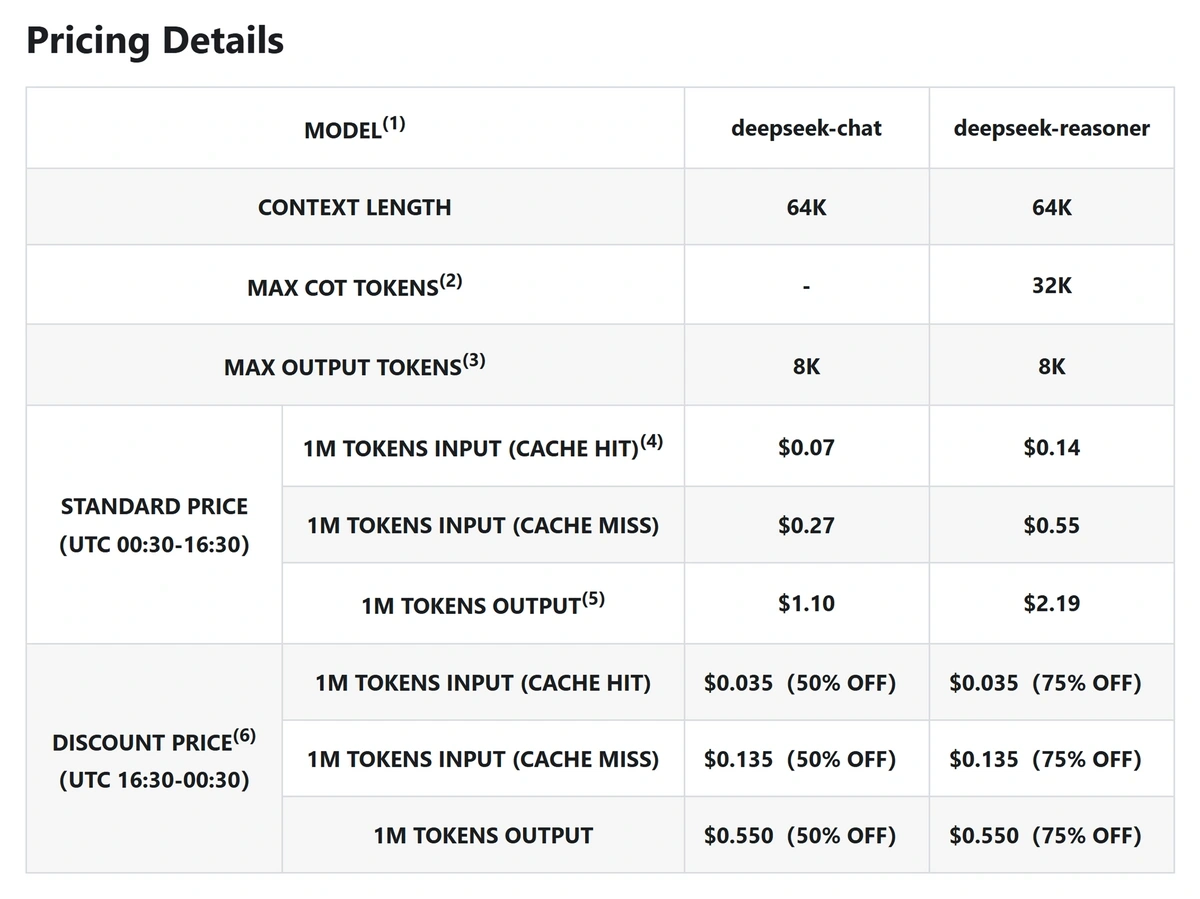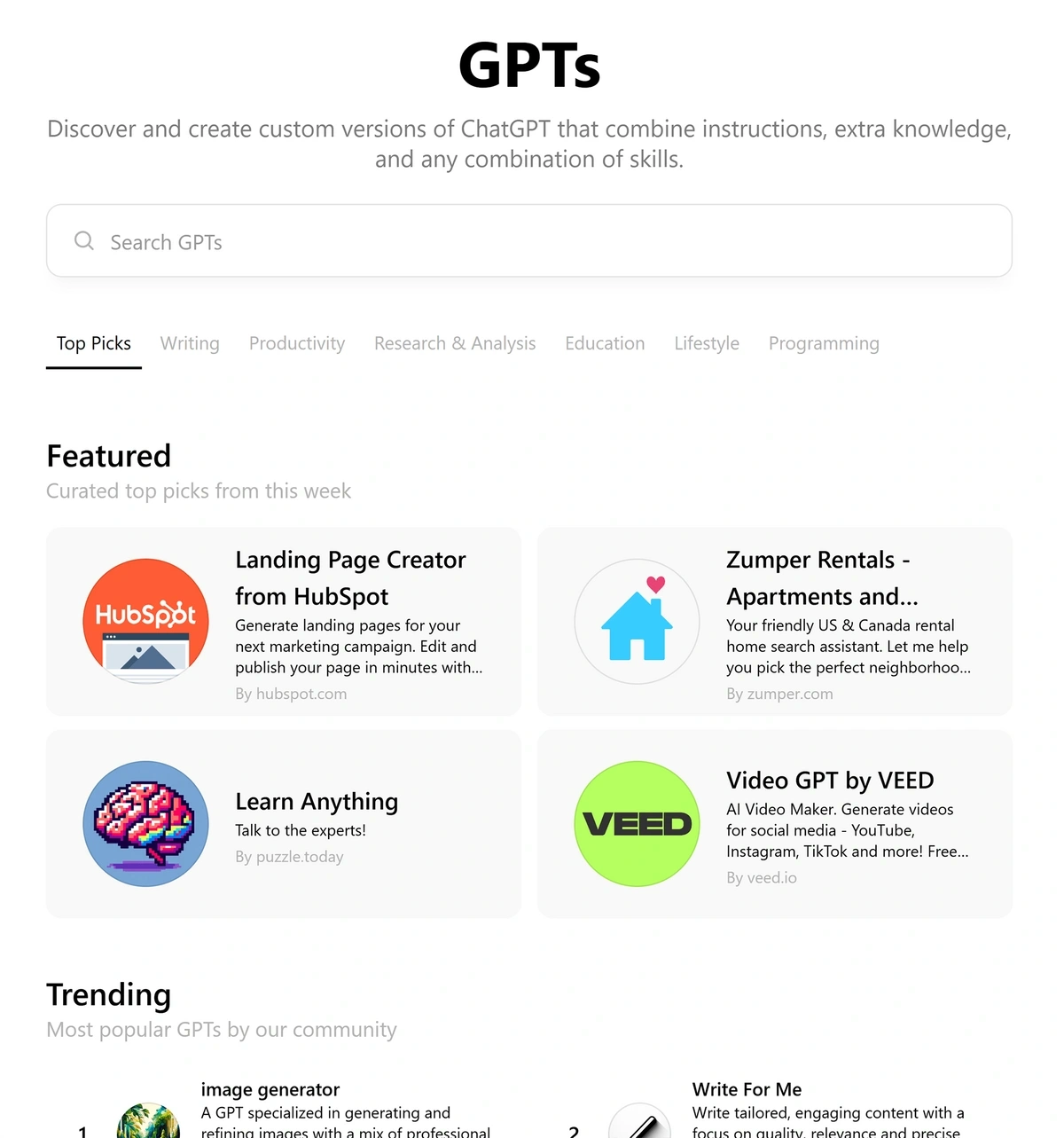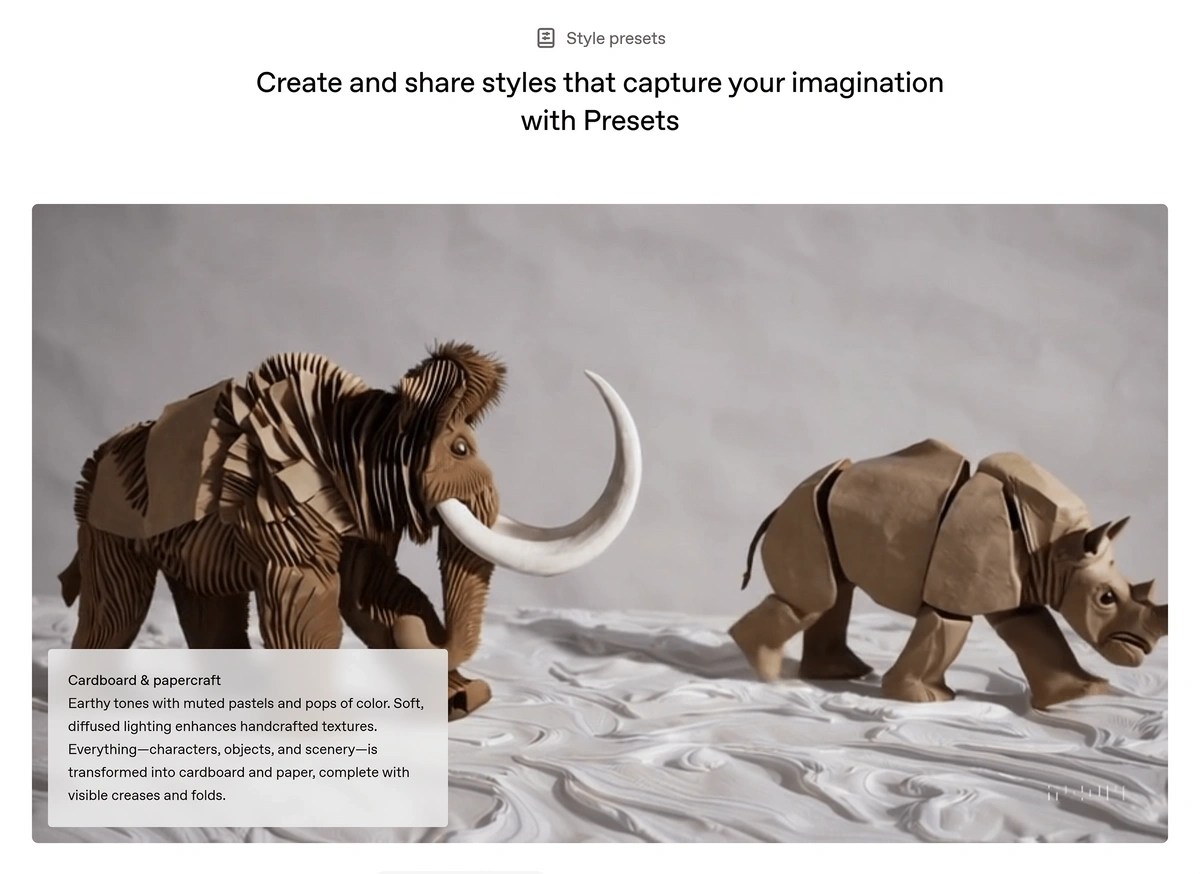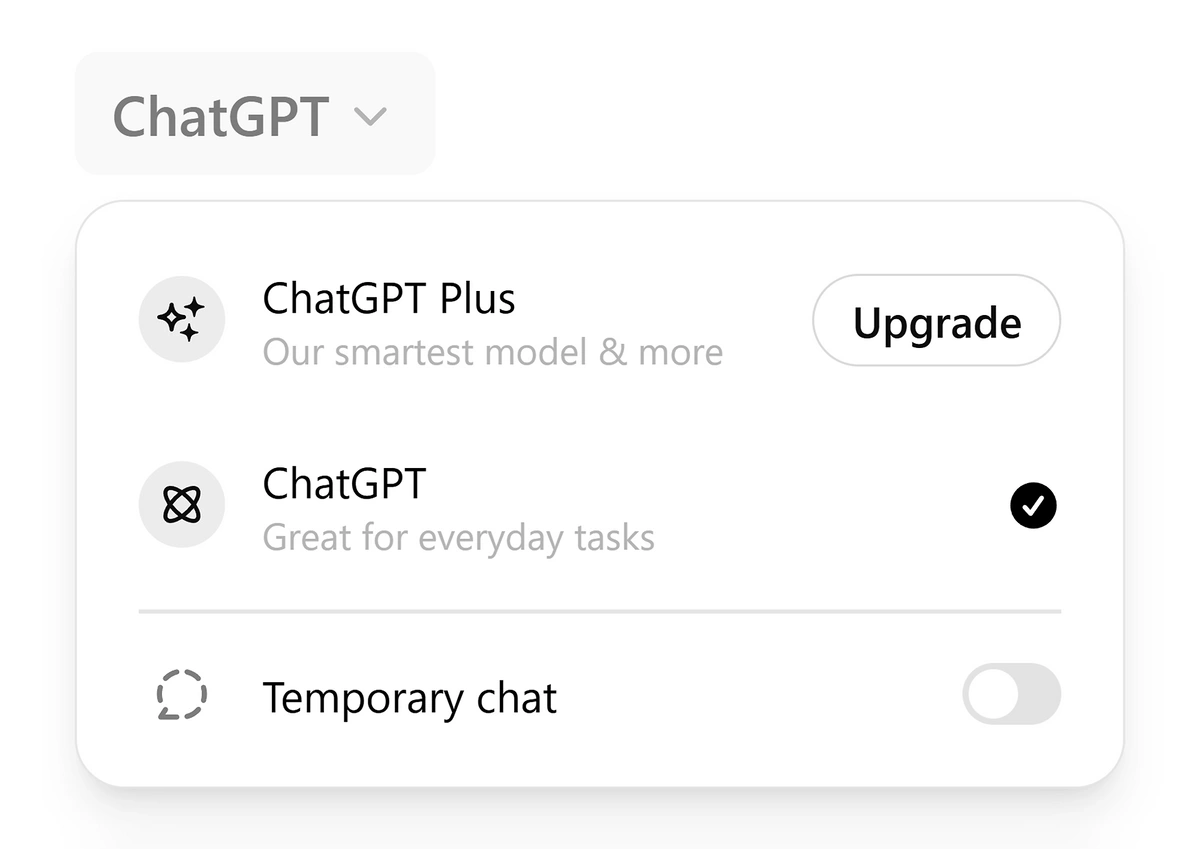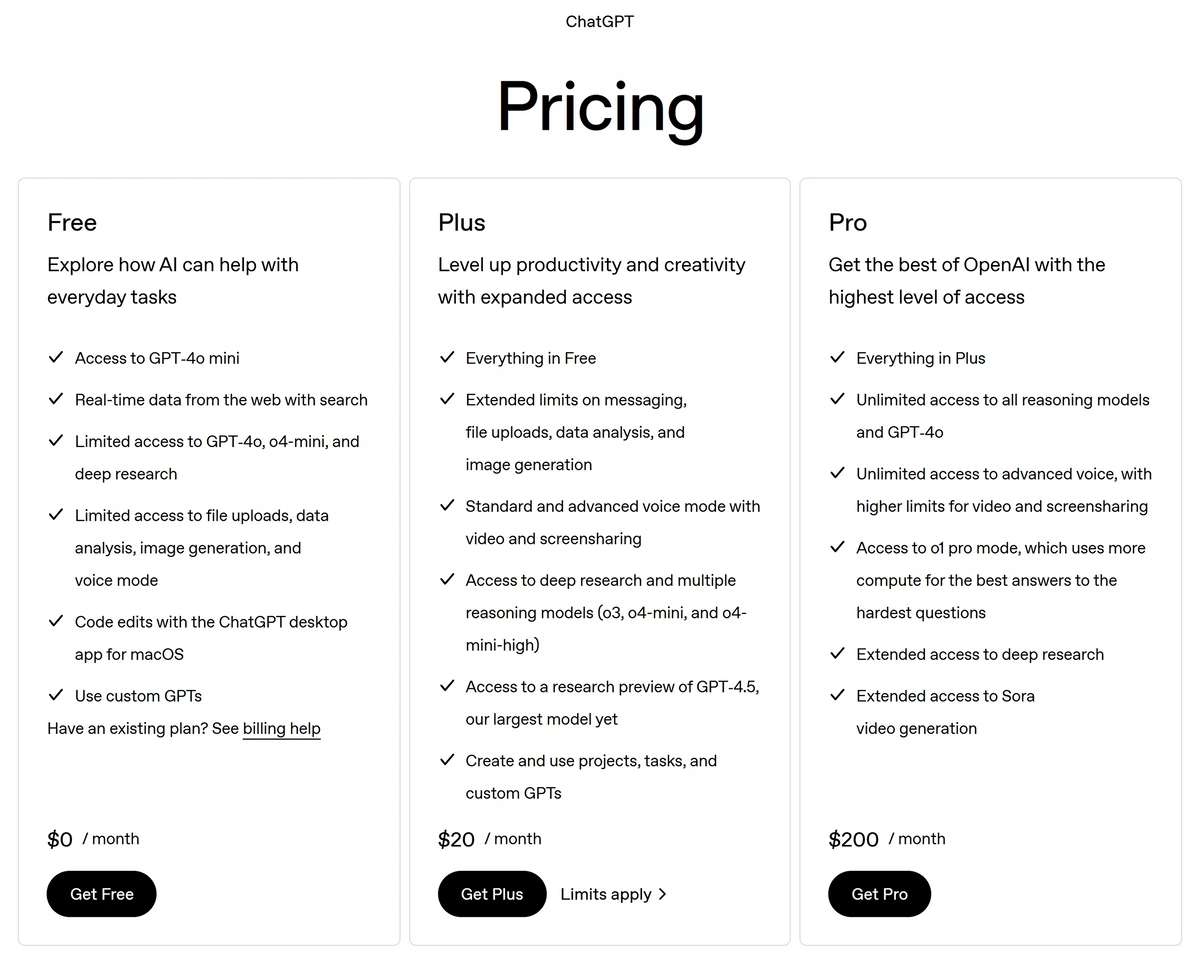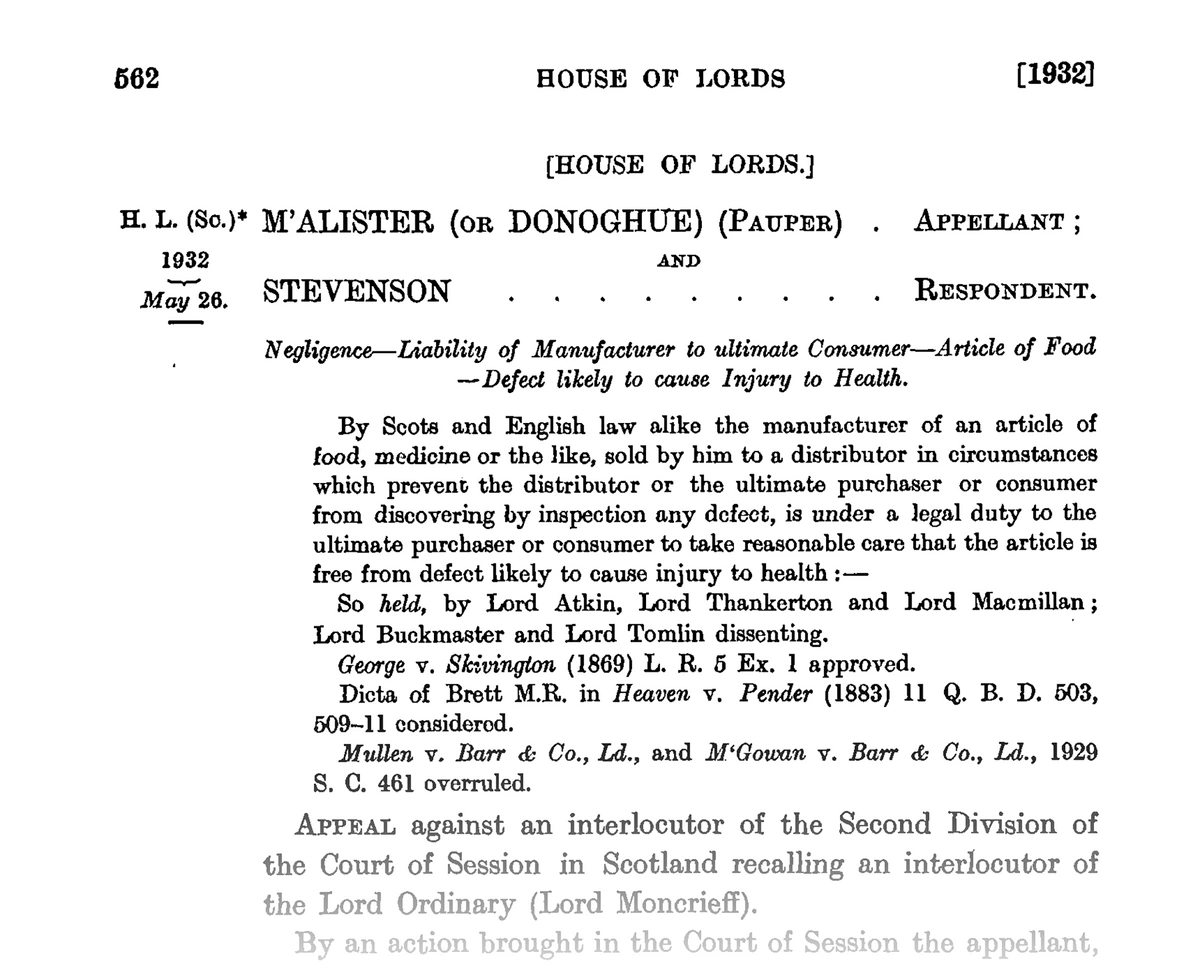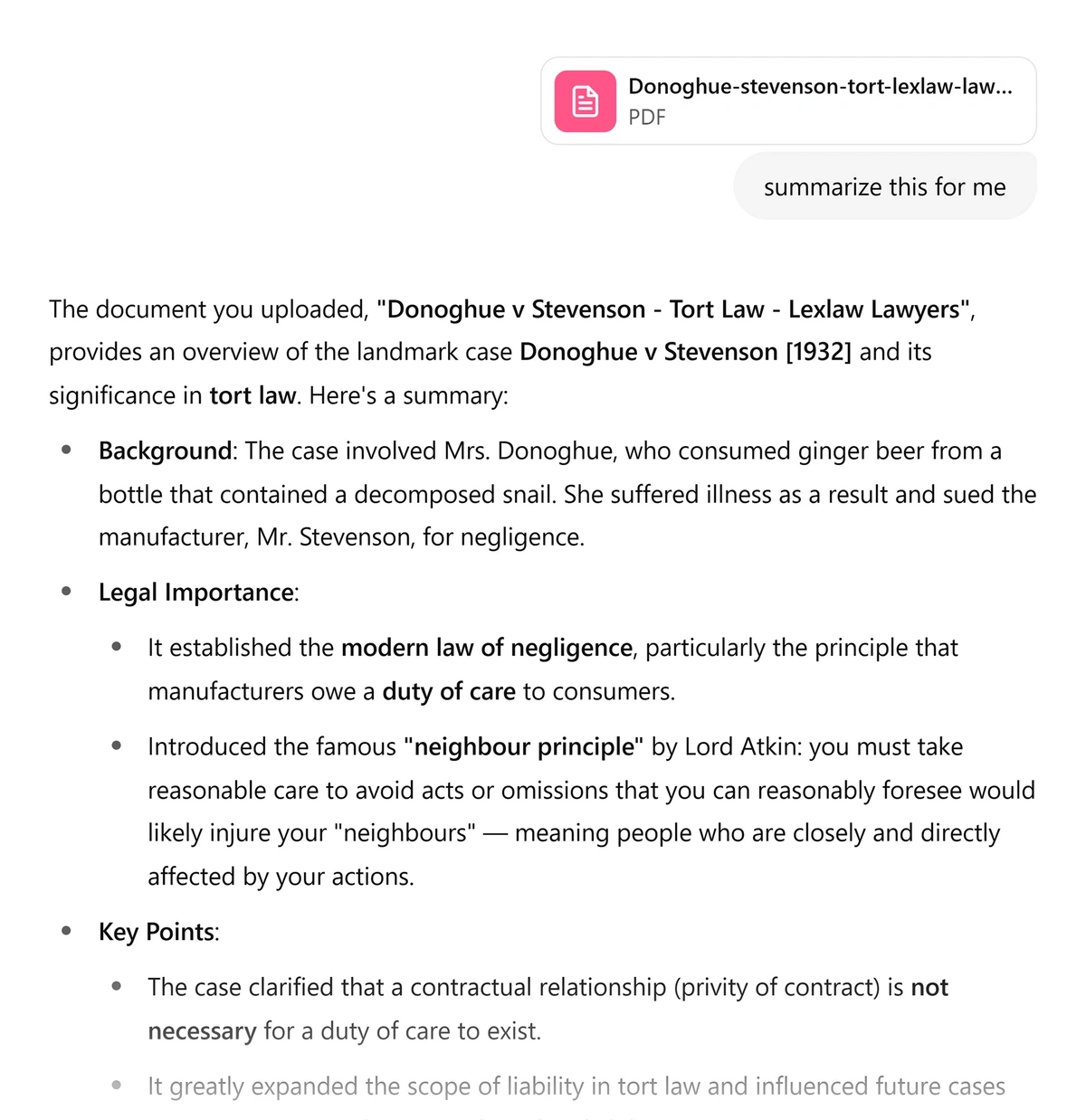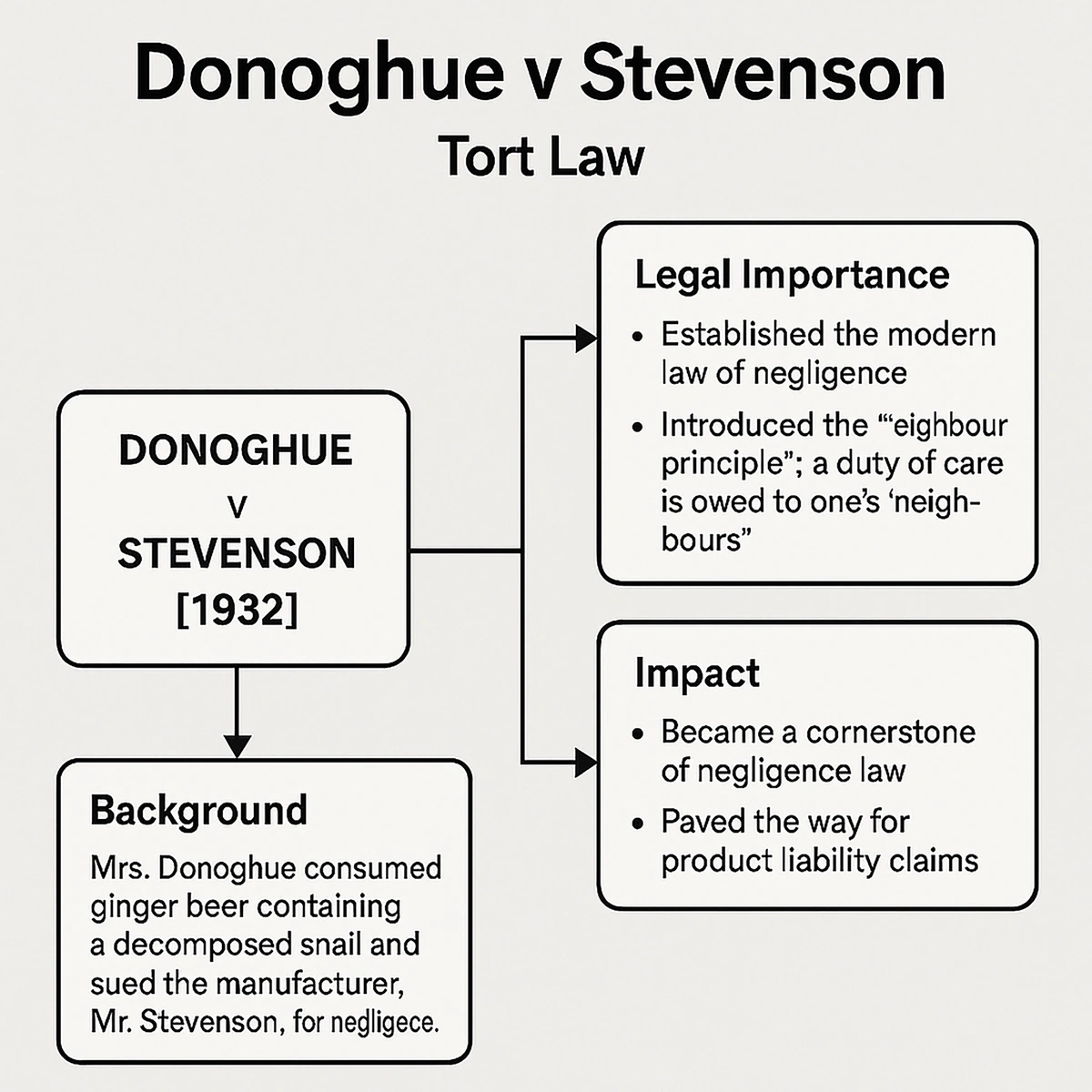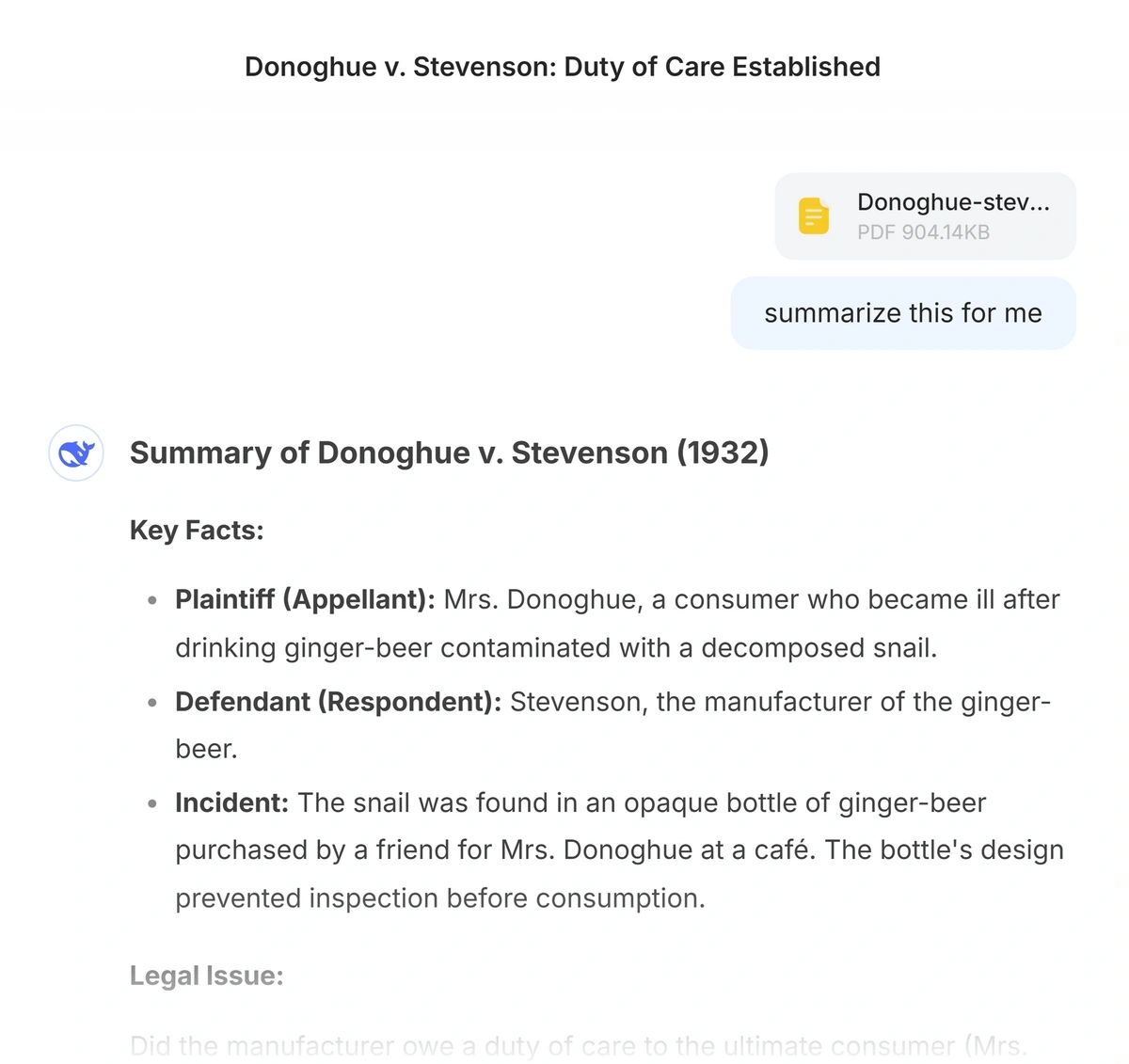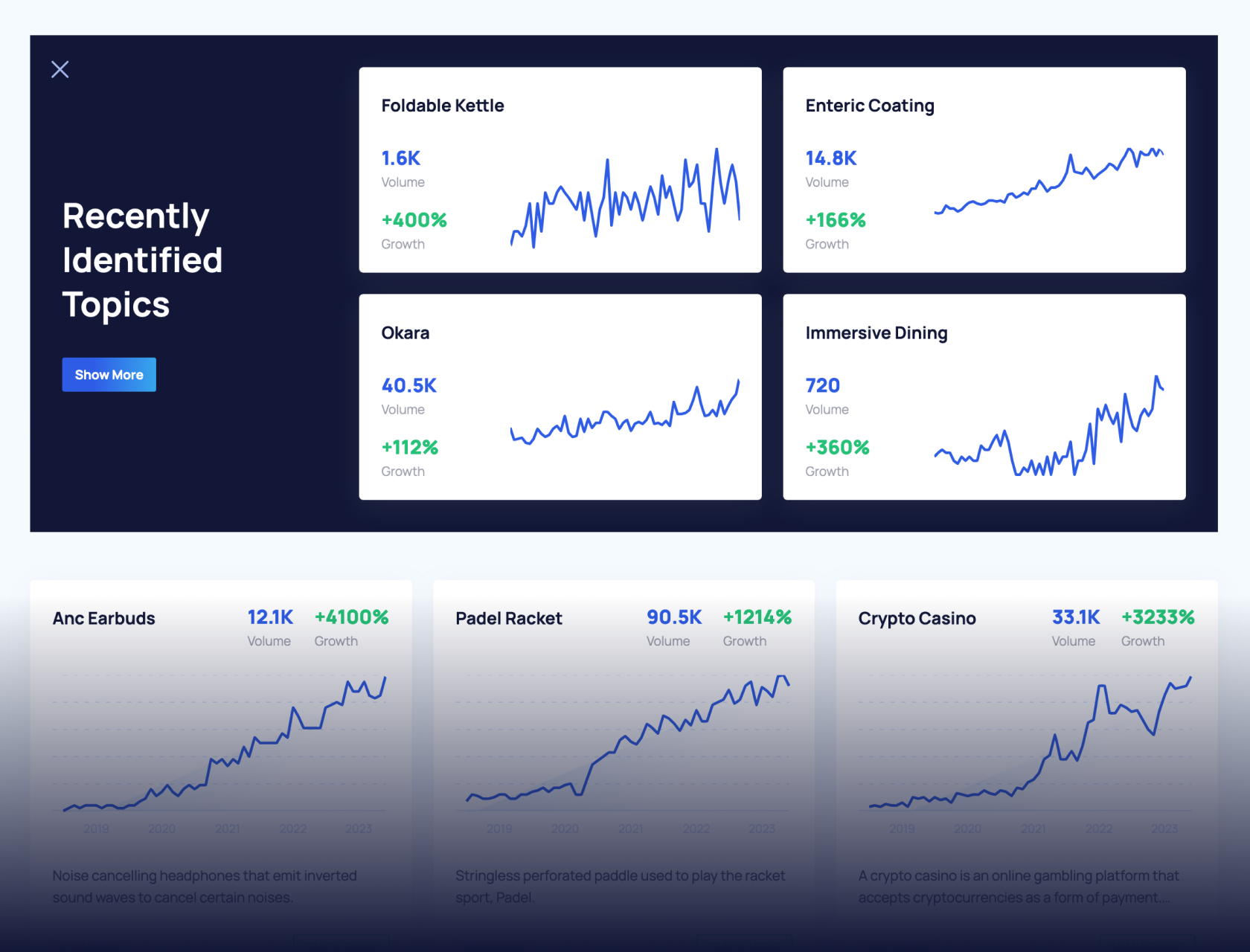
DeepSeek vs ChatGPT: Which LLM is Better?
ChatGPT took AI chatbots into the mainstream in the US. It has continued to be a leader in the ever-evolving space, but the arrival of DeepSeek in January 2025 sent shockwaves through the industry.
Is ChatGPT still the tool to use? Or does DeepSeek boast better capabilities? This thorough guide examines two of the leaders in the AI space, and should help you to decide which chatbot is best for you.
DeepSeek vs ChatGPT: Main Differences
| DeepSeek | ChatGPT | |
| Key differentiators | Open-source model Free to use Uses a “mixture of experts” model to reduce computational power | Text and image capabilities
Compatible with many languages Privacy features |
| Best For | Wholly text-based responses like coding or speech writing | Anything beyond entirely text-based prompts and outputs |
| Target Users | High-volume AI chatbot users seeking sophisticated, well-reasoned responses | Users with more complex AI needs who are willing to pay a subscription fee |
| Conversation Capabilities | Good for plain-language conversations, strong on heavily reasoned responses | Very natural conversational feel in various languages |
| API Access | DeepSeek-V3 and DeepSeek-R1 | All current OpenAI models |
| Data Accuracy | Real-time web search | Real-time web search, can also return visual data like maps and charts |
| Pricing | Free | Limited free plan $20/mo Plus plan $200/mo Pro plan |
DeepSeek Overview
DeepSeek is a Chinese-built alternative to ChatGPT. In April 2025, Semrush reported that the DeepSeek website received more than 508 million visits per month.
The DeepSeek R1 model, released in January, claimed to have cost significantly less than ChatGPT’s models while rivaling their functionality. There was a significant stock market response, with shares in US tech giants taking a major hit.
“DeepSeek” had a massive January search spike.
In basic terms, DeepSeek serves much the same purpose as ChatGPT. It is a conversational chatbot that uses AI to answer user queries and prompts.
It currently comprises two flagship models: DeepSeek-V3 and DeepSeek-R1.
The R1 model uses chain of thought reasoning to give detailed, step-by-step answers. The chatbot can also search the web where necessary to provide the most up-to-date responses.
“Chain Of Thought Reasoning” searches are up 7100% in 5 years.
DeepSeek is solely backed by High-Flyer, a quant fund that has long been using AI models to guide its investment strategies.
DeepSeek Key Features
DeepThink and Web Search
When asking DeepSeek a question, users can toggle two options on and off: “DeepThink (R1)” and “Search”.
- DeepThink (R1) is a reasoning model. Its answers display a chain of reasoning, making it useful for more complex prompts. The trade-off is that it’s slower to provide an answer compared to non-reasoning models.
- Search allows DeepSeek to access the internet where necessary before returning its answers. This ensures responses are as up-to-date as possible.
Mixture of Experts (MoE)
DeepSeek’s V3 model boasts 671 billion parameters in total. Only 37 billion are activated in response to any given user prompt.
That’s because DeepSeek uses an MoE structure. The model contains numerous expert neural networks, and queries are filtered into the most appropriate one via a gating network. This is said to massively cut down on computational costs.
There are also performance benefits. Different DeepSeek “experts” can process in parallel.
DeepSeek isn’t the only AI chatbot to use an MoE model — a Google DeepMind employee has confirmed that everything from Gemini 1.5 onward operates similarly. However, the Chinese company has been the most public about this technique and its efficiency benefits.
Coding Assistance
If you ask DeepSeek how it can help you, it will mention technical and programming assistance.
This is widely considered one of the areas where DeepSeek excels. It has a specialized model for coding called “DeepSeek Coder”.
To use the coding model, users can type their prompts into the main DeepSeek chatbot. The gating network then sends the queries to a specialized neural network.
DeepSeek has scored well on various programming benchmarks.
Open-Source Models
Unlike ChatGPT, DeepSeek’s models are open-source. That means the underlying code is available to view, modify, and use for any purpose.
Companies like Meta and Google can be considered to have “open” models. But they aren’t truly open-source because they place limitations on how the code can be reused.
To the everyday user of AI chatbots, the open-source nature of DeepSeek makes no real difference. For AI developers, the fact that DeepSeek is open-source can be considered a key feature.
You can run DeepSeek locally, although it requires a high-end machine. You can also create new, uncensored instances, which is precisely what Perplexity did with its uncensored version, R1 1776.
DeepSeek Pricing
DeepSeek is free to use on the web. There are fees associated with using the DeepSeek API, but they are low when compared to similar models.
Users are billed for “tokens”, which are units of text like words, numbers and punctuation marks.
- 1 million tokens of API input using the R1 model costs $0.14 during peak times, and $0.035 at the discounted price between 16:30-00:30 UTC.
- 1 million tokens of output costs $2.19, with a discount price of $0.550.
Build a winning strategy
Get a complete view of your competitors to anticipate trends and lead your market
ChatGPT Overview
ChatGPT is primarily a chatbot, providing AI-generated answers to user questions and prompts.
It boasts at least 400 million users, and is among the 10 most popular websites in the world.
There are now more than 500 million “ChatGPT” searches monthly.
ChatGPT is developed by OpenAI. Originally founded as a non-profit, the company currently operates a hybrid “capped-profit” setup.
OpenAI.com receives 1.2 billion monthly visits as of May 2025. ChatGPT.com gets over 5 billion.
As well as providing text-based responses, ChatGPT also has features for image and video generation.
ChatGPT Key Features
Multiple Languages
ChatGPT officially supports over 50 different languages, and has limited capabilities in almost twice as many. The chatbot automatically detects the input language and responds in the same way.
Its best responses come in “high-resource” languages like English, where there is an abundance of training data.
Experts agree that its language skills are more robust than other AI chatbots.
Custom GPTs
ChatGPT is customizable without requiring any coding. Custom GPTs can be loaded with instructions and extra knowledge, offering a more specialized experience.
Users can create their own custom GPTs or browse an extensive collection of GPTs created by the community.
Multimodal Capabilities
A major benefit of ChatGPT is that its capabilities are not limited to text. It can also understand pictures and charts.
Output is multimodal too:
- DALL-E 3 is a text-to-image generator available within ChatGPT
- Sora is a powerful AI video generator available to paid ChatGPT users
- GPT Image is a new image generator that allows you to generate images via the OpenAI API
- There’s a voice chat feature within ChatGPT that lets users converse with it in real time
Privacy Features
ChatGPT has a “temporary chat” mode, which is great for privacy-minded users.
When enabled, it also prevents ChatGPT from using your conversations to train OpenAI models.
By default, conversations from users on ChatGPT Teams are also excluded from training.
ChatGPT Pricing
ChatGPT has a free tier.Unlike DeepSeek, it is limited, and users require a paid subscription to access a lot of the best features.
- The free plan gives full access to the GPT-4o mini model, complete with real-time web search. Everything else is restricted: there’s limited use of the GPT-4o and o3-mini models, file uploads, image generation, Deep Research, and voice mode. You can also use (but not create) Custom GPTs.
- Plus costs $20 per month. For that, you get extended limits on uploads and image generation, limited access to video generation through Sora, and full use of Deep Research, plus standard and advanced voice mode. You can create your own GPTs, and access more models.
- Pro costs $200 per month. This lifts many of the usage restrictions, and provides access to “o1 pro mode”, which harnesses extra compute power for better answers.
Want to Spy on Your Competition?
Explore competitors’ website traffic stats, discover growth points, and expand your market share.
DeepSeek vs ChatGPT: Key Differences
The main differences between DeepSeek and ChatGPT are their multimodal capabilities, ease of access, and cost.
1. Supported input and output formats
DeepSeek allows you to upload media. Note that the chatbot’s capabilities are limited to “reading” the text of uploaded documents. It’s essentially text-only, both in terms of input and output.
Having said that, DeepSeek does deal adeptly with PDF texts. I tested out both DeepSeek and ChatGPT on a famous legal case, Donoghue vs Stevenson.
I wanted to test DeepSeek and ChatGPT with the same uploaded text and the same prompt. I asked them both to give me a summary of the PDF.
ChatGPT seemed to think I had uploaded a “detailed explanation” of the case, as opposed to the actual ruling. But it gave a very serviceable summary of the main points, and it also asked if I’d like a diagram.
That was a nice touch, although when I asked for the diagram, there was quite a long delay. And the end result was still very text-based, did not really add anything, and cut off strangely at the bottom.
DeepSeek appeared to recognize that I had uploaded the actual ruling from Donoghue and Stevenson. It also gave a slightly better summary from a legal perspective, including brief details of the dissenting judgment.
It didn’t give any suggestions of further ways it could assist me in explaining the case. But in terms of its initial answer, DeepSeeek had the edge on ChatGPT.
Even so, if you need to work extensively with images, ChatGPT is likely to be better for you.
With DALL-E 3, GPT-Image, and Sora, ChatGPT has an impressive suite of multimodal tools. Users can use text prompts to generate images and videos — although it’s worth noting that these features require a subscription for full use.
2. Public availability of the models
DeepSeek is available for free at the point of use. It’s also open-source, meaning the code is freely available for developers to use.
ChatGPT is proprietary, so the code is not open to the public. It also requires a subscription for many of its premium features.
3. Scope to specialize
In their own ways, DeepSeek and ChatGPT both allow for specialization within certain niches. But they do so very differently.
DeepSeek does it automatically, with its Mixture of Experts (MoE) approach automatically sending queries to specialized networks. These networks cannot be custom-built or even manually selected by users, except for the separate DeepSeek Coder tool.
ChatGPT does not disclose if it uses MoE. We know far less about its code generally, because of its proprietary model. But specialization comes in another form through user-created Custom GPTs. These can significantly alter how the chatbot operates and responds.
Who Should Use DeepSeek?
At a basic level, the most significant difference between DeepSeek and ChatGPT is that one is entirely free.
In that respect, DeepSeek is the better choice for any high-volume AI chatbot users wanting to avoid usage limits.
Provided you only need text-based features, like assistance with code or help writing articles and scripts, DeepSeek will serve you very well, and is a better, more economical choice than ChatGPT.
Who Should Use ChatGPT?
ChatGPT is definitely the better choice for users hoping to generate images and videos. This functionality does not exist in DeepSeek.
It’s also probably better for anyone using a language other than English or Chinese. DeepSeek’s capabilities are thought to be somewhat weaker in languages where there is less training data.
Another decent use case is ChatGPT for SEO, although many of those strategies could be executed on DeepSeek too.
Finally, privacy-minded users might prefer ChatGPT.
DeepSeek dispelled the worst privacy fears by making its code open source. Despite that, DeepSeek is banned in certain countries, and ChatGPT’s active privacy features like disappearing messages are more reassuring than anything offered by the Chinese chatbot.
Is It Time to Switch to DeepSeek?
ChatGPT has a legitimate competitor when it comes to its core use case: returning sophisticated, well-reasoned answers to text-based questions and prompts.
DeepSeek fulfils this brief with comparable quality to ChatGPT. And its lack of paid subscriptions makes it the better choice for plenty of users.
But ChatGPT remains the more three-dimensional of the two AI chatbots. For features like image and video generation, it still comes out on top, and is more capable for advanced tasks.
Ultimately, both DeepSeek and ChatGPT can be helpful tools. AI in general is more useful than ever — that’s why Semrush has a whole collection of AI apps to assist your marketing efforts.
For most people, switching between different models for different tasks will equip you with a powerful toolkit.
Stop Guessing, Start Growing 🚀
Use real-time topic data to create content that resonates and brings results.
Exploding Topics is owned by Semrush. Our mission is to provide accurate data and expert insights on emerging trends. Unless otherwise noted, this page’s content was written by either an employee or a paid contractor of Semrush Inc.
Share
Newsletter Signup
By clicking “Subscribe” you agree to Semrush Privacy Policy and consent to Semrush using your contact data for newsletter purposes
Written By


James is a Journalist at Exploding Topics. After graduating from the University of Oxford with a degree in Law, he completed a... Read more




